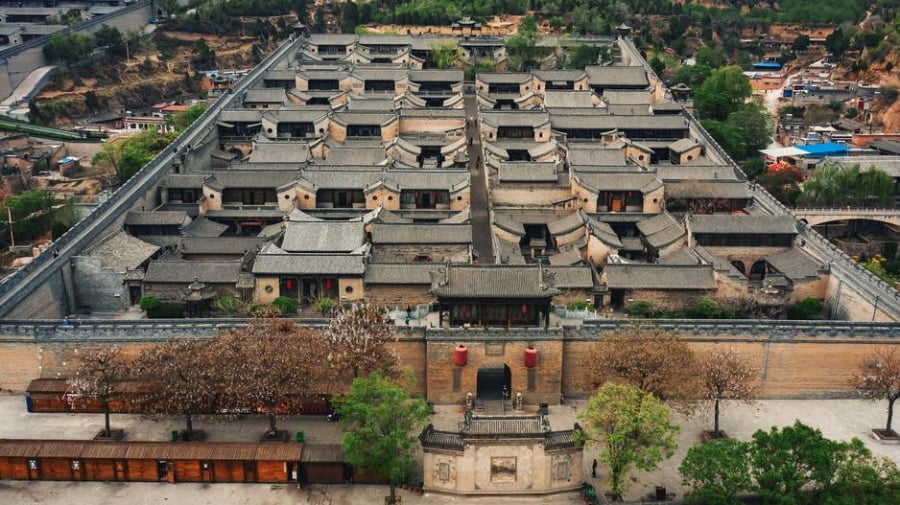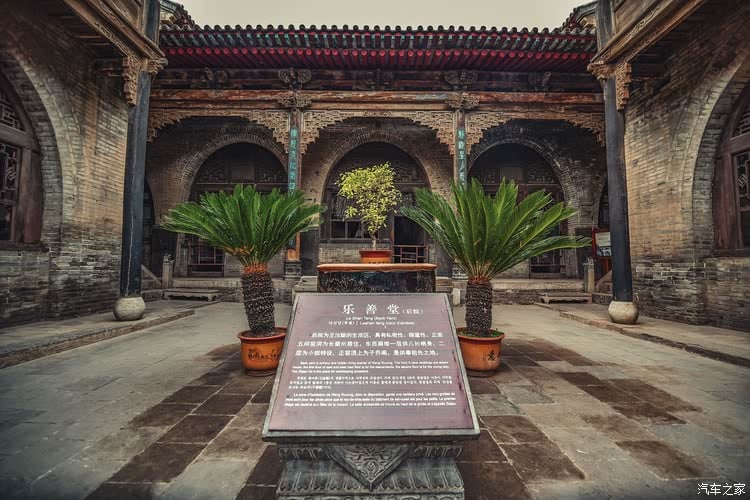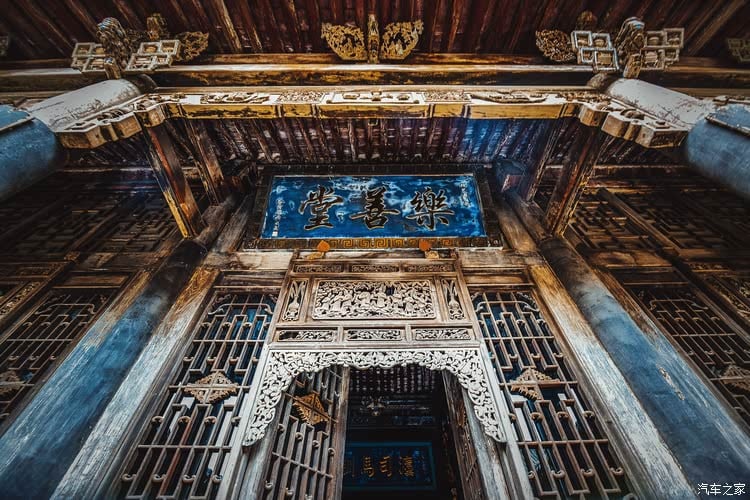Beyond the grandiose imperial palaces of China’s emperors, there exist folk architectural wonders that hold immense cultural value. One such example is the Wang family compound in Shanxi Province.
From Humble Beginnings…
The story of the Wang clan dates back to the 14th century when their ancestors migrated from Langya (present-day Qingdao in Shandong Province) and settled in Linshi, Shanxi. Starting as humble tofu makers, the Wang family gradually expanded their enterprise over generations into salt trading, silk commerce, and banking.
During the reign of Emperor Kangxi (1654-1722), the Wang family’s business acumen and connections with the imperial court propelled them to become one of the wealthiest merchants in Shanxi. The 14th generation descendants, Wang Qianhua and Wang Qianshu, implemented a strategy of “merchants supporting the military, and the military protecting the merchants,” which led the family to unprecedented prosperity.

A Unique Architectural Masterpiece Infused with Feng Shui Principles
What struck me the most upon my first visit to the compound was its immense scale. Spanning an area of 250,000 square meters, it is even larger than the Forbidden City (150,000 square meters). Within its walls lie 123 smaller courtyards and 1,118 rooms, harmoniously arranged according to the natural terrain.
According to Dr. Nguyen Thi Thu Ha, a China culture researcher at the Institute of Southeast Asian Studies (as reported by Vietnamnet), “The orientation of the compound, with its back against the mountain and the main entrance facing south, not only ensures aesthetic appeal but also holds profound feng shui significance. This orientation invites cooling summer breezes and blocks cold winter winds, reflecting the ancients’ understanding of geography and climate.”
Every detail in the compound bears testament to meticulous craftsmanship, from intricate wood carvings to delicate brick patterns. Notably, the well-designed garden and pond systems create a harmonious balance of yin and yang throughout the entire space.

A Testament to Endurance
Despite enduring over 300 years of historical vicissitudes, the Wang family compound remains a resilient witness to history. In 1994, a portion of the compound was opened to the public, attracting visitors intrigued by its cultural and architectural significance.
Wang Nhu Kiet, an 80-year-old descendant of the 22nd generation, shared with Tuoi Tre newspaper: “The reason for our family’s longevity and prosperity across generations lies in our strict adherence to our ancestors’ teachings. We value integrity, propriety, and the accumulation of virtue through good deeds.”
Today, the Wang family compound has been recognized as a National Key Cultural Relic Protection Site in China (as reported by Sohu in 2006). It stands not only as a source of pride for the Wang clan but also as a precious cultural treasure, enriching the world’s architectural heritage.

Conclusion
The Wang family compound is more than just an imposing architectural marvel; it is a testament to the harmonious fusion of construction artistry, feng shui philosophy, and traditional cultural values. Through this legacy, we gain a deeper appreciation for the invaluable heritage bestowed upon us by our ancestors.
The Ultimate Guide to Choosing and Arranging a Feng Shui Water Fountain
“Feng Shui fountains are an excellent way to bring positive energy into your space. Our expert guide will teach you how to choose and position these fountains to create a harmonious and prosperous environment. Learn the secrets to enhancing your wealth, health, and overall well-being through the power of Feng Shui and these beautiful water features.”

































